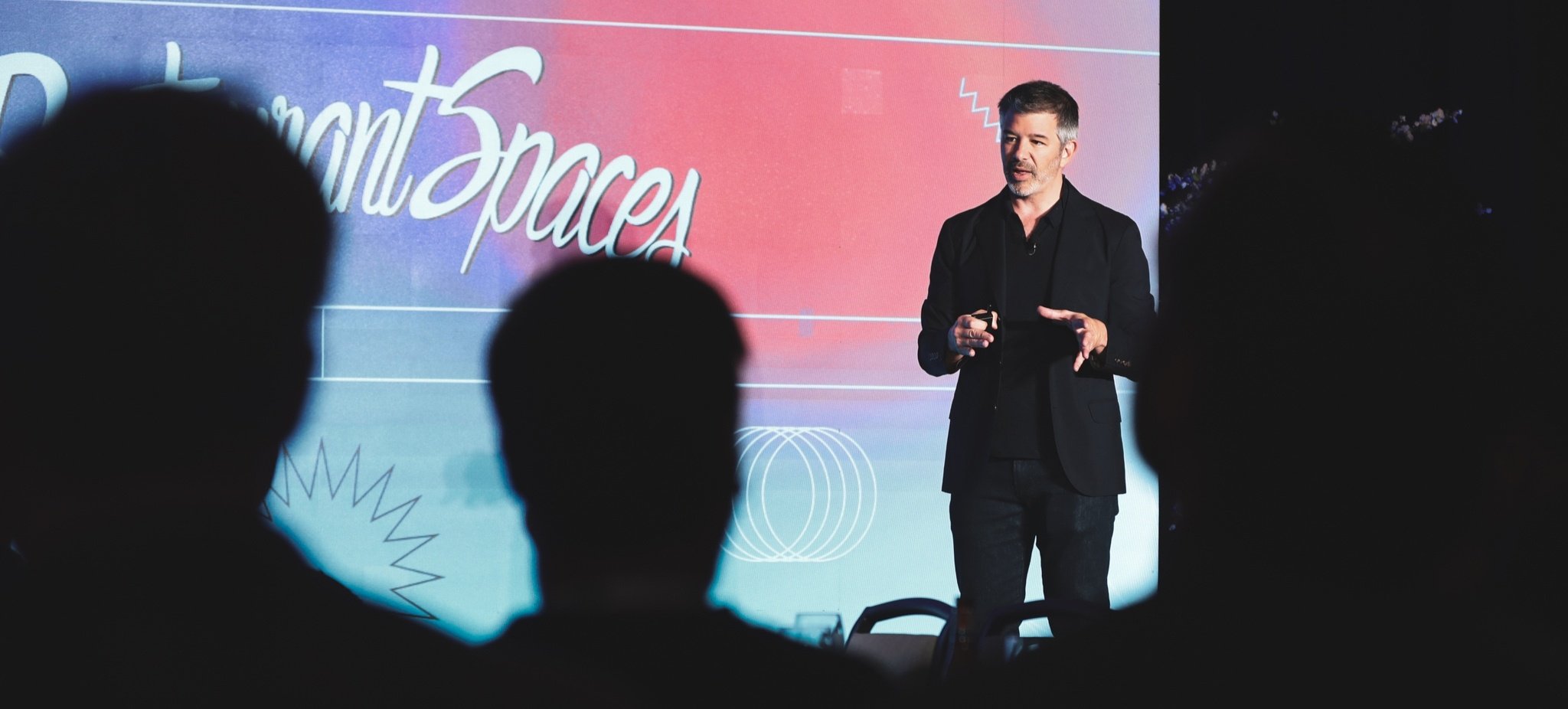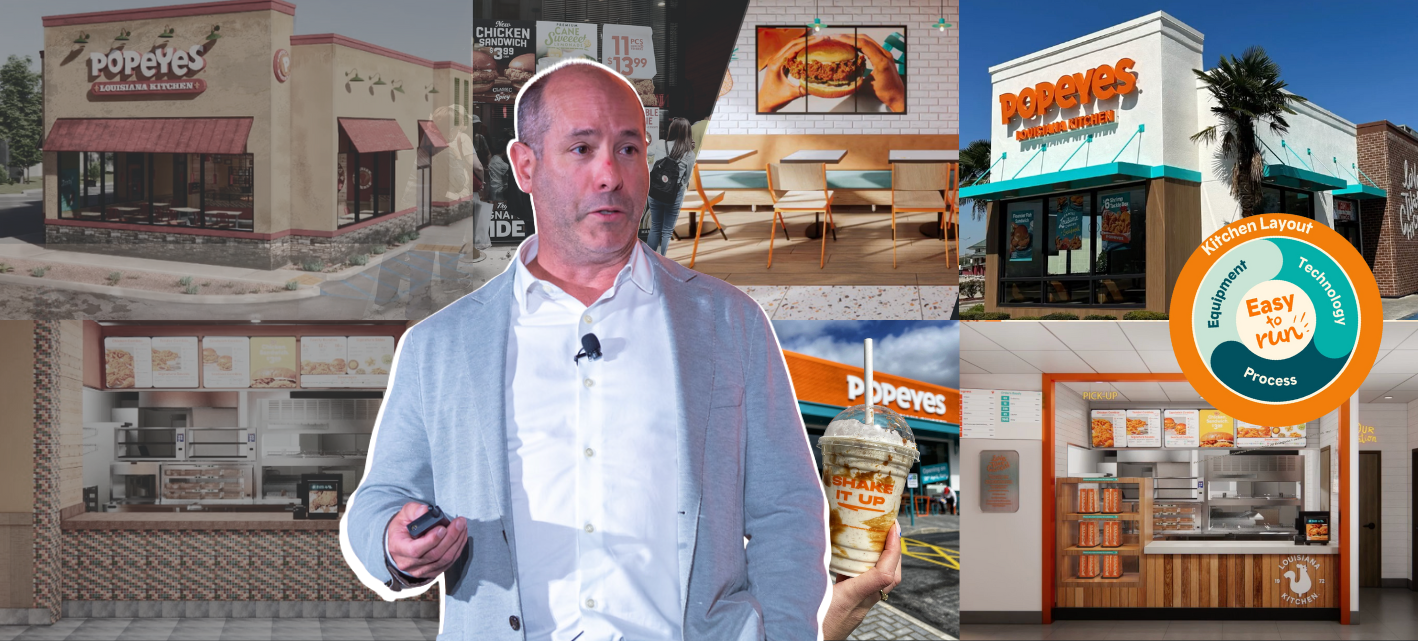For the first time in seven years, Travis Kalanick returned to the public stage. The co-founder and former CEO of Uber delivered a rare keynote at RestaurantSpaces in Los Angeles in April 2024. It was his first public speaking engagement since leaving Uber in 2017.
Since stepping away from the rideshare giant, Kalanick has largely operated in what he described as “stealth mode.” Less than a year after leaving Uber, he became CEO of City Storage Systems and invested heavily in its subsidiary, CloudKitchens. CSS’s broader portfolio also includes the robotics company Lab37 and the restaurant software provider Otter.
Kalanick has declined most public speaking opportunities during this time, making his appearance at RestaurantSpaces a rare moment of visibility.
“If you want to inspire folks, you can’t just sit in a cave all day,” he said. “You have to get out and talk to folks and show them what you’re up to. You have to connect with them human-to-human. That’s what this is about.”
His return to the stage offered the perfect opportunity to outline his long-term vision to transform how food is produced, delivered, and consumed.
 Travis Kalanick speaking at RestaurantSpaces in April '24
Travis Kalanick speaking at RestaurantSpaces in April '24
Disrupting the (Home) Kitchen
Kalanick made it clear that he did not enter the food service industry simply to improve restaurant delivery. His target is much bigger: the home kitchen and the massive grocery market.
“There’s one place that’s the hands-down winner of meals, and it’s called the home,” he said. “If the price of a meal prepared and delivered to you started to approach the cost of going to the grocery store, could you do to the kitchen what Uber did to the car?”
In other words, Kalanick is not just after restaurants. He is focused on reshaping how people access food altogether. His thesis centers on efficiency and scale.
“People are willing to pay so much for convenience; it could be that you actually double the value that people get out of it,” he said. “It's a huge opportunity. We've got to get costs down, we've got to give people convenience and their time back.”
The Internet Food Court
At the core of Kalanick’s vision for the future of food service is what he calls the “internet food court.” The idea is a system that lets consumers order any meal they want with lightning-fast delivery.
The physical backbone of this model is the cloud kitchen, also known as a ghost kitchen, or what Kalanick’s team refers to as a “multi-tenant food manufacturing facility.” These centralized production hubs allow restaurant brands to expand their off-premise operations without the cost of traditional real estate.
 A CloudKitchens location in Dallas
A CloudKitchens location in Dallas
The cloud kitchen model enables brands to:
- Expand into dense, expensive real estate markets
- Access new customers without opening full-service stores
- Offload delivery volume from overwhelmed dine-in locations
- Reduce labor, construction, and operating costs
Kalanick explained that cloud kitchens also protect the health of brick-and-mortar restaurants by removing delivery friction from the dining room.
“What we found in those situations is that the revenue from walk-in traffic goes up,” he said. “Because when lots of couriers are coming in and the complexity of everything starts to curve, you're trading offline orders for online orders. And when you get those online orders off-loaded, the brick and mortar revenue starts to buoy back up to where it was.”
Robotics as the Engine
If cloud kitchens are the backbone of the internet food court, robotics are the engine that powers it.
Kalanick highlighted Lab37’s automated “bowl builder” robot as a real-world example of how automation is already reshaping food production. The robot can assemble and bag more than 100 bowls per hour, with human staff simply loading ingredients.
“It takes out 50 percent of the labor on a bowl-type concept,” Kalanick said. “Eighteen food dispensers, 10 sauce choices, everything's thermally controlled. This robot is already running a $2 million AUV restaurant in Pittsburgh, right now, delivery only.”
While he believes full-scale adoption of robotics will take time, he sees mass deployment as inevitable.

Lab37's autonomous Bowl Builder
“It just takes a certain amount of time to get the meta machine up and running so that you can produce hundreds or thousands of these robots per year,” he said.
Once that production barrier is solved, Kalanick expects robotic systems to become modular and adaptable across different restaurant formats, not just bowl-based concepts.
Solving the Last Mile with Autonomous Delivery
Kalanick’s automation strategy extends beyond food production and into logistics. He identified last-mile delivery as one of the biggest cost drivers in the industry and a critical barrier to unlocking true efficiency.
“It’s all about the catapult,” he joked. “You just have this central facility with catapults, and you shoot the food wherever it needs to go.”
While the comment was delivered with humor, his underlying point was serious. Autonomous delivery, whether through ground robots, drones, or self-driving vehicles, represents a major opportunity to fundamentally change the economics of food delivery.
Referring to the progress made by Waymo and Tesla, Kalanick said large-scale deployment is ultimately a manufacturing problem rather than a technology problem.
Once autonomous fleets can be produced at scale, delivery economics will shift dramatically.

Efficiency, Sustainability, and the Environmental Impact
Beyond cost savings and convenience, Kalanick also emphasized the environmental upside of the cloud kitchen and automation model. By reducing redundant construction, consolidating energy usage, and optimizing delivery routes, the model also cuts emissions.
“Everything about what we do is about efficiency,” he concluded. “When that efficiency plays out, restaurants win — but the environment wins too.”
Why This Moment at RestaurantSpaces Mattered
Kalanick’s appearance at RestaurantSpaces marked more than just a rare speaking engagement. It represented a reset of his public presence after seven years of relative silence.
Rather than returning on a traditional tech stage, he chose to re-emerge directly within the restaurant industry itself. From automation and ghost kitchens to robotics and autonomous delivery, his message was clear: the next transformation of food will be built on efficiency, software, and scale.
And for the first time in seven years, he chose to say it out loud.

Posted by
Chain Restaurants Reimagined.
The Retreat to Reimagine Restaurant Development, Design + Technology.
April 12-14, 2026 | Miami, FL





-3.png)
-4.png)
-3.png)



Comments